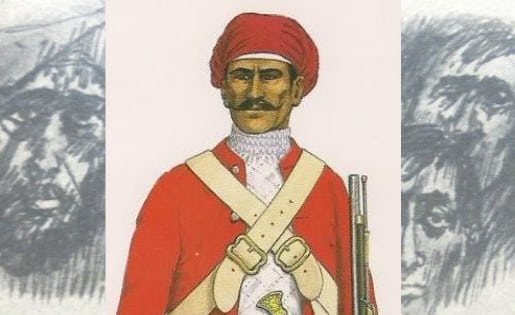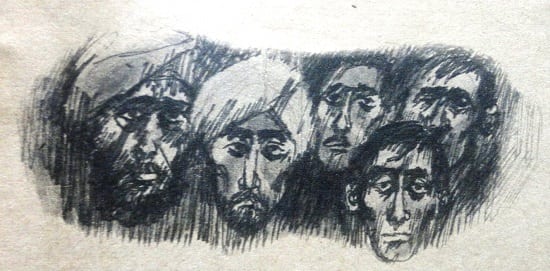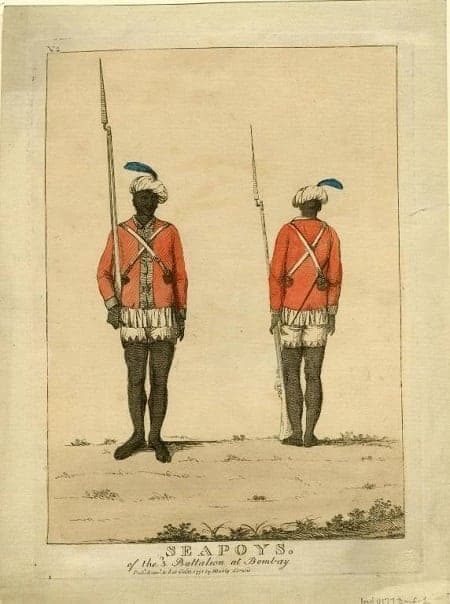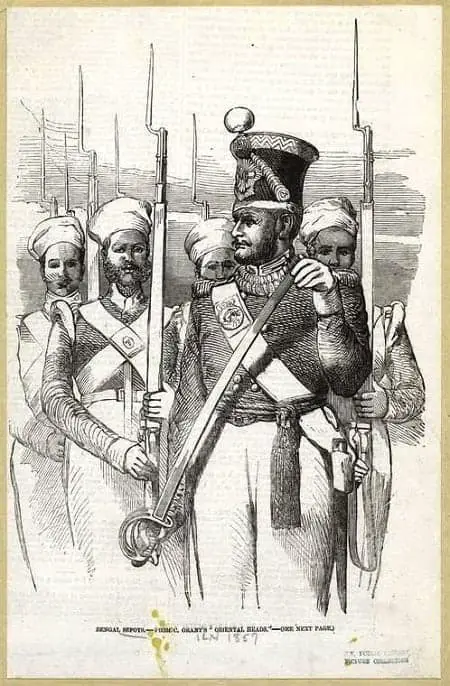Here’s Why There Are Many Dark-Skinned, Indian-Looking Filipinos in Cainta

The preponderance of dark-skinned people in Cainta–similar to the complexions of some Indians—have been observed for over a century.
The common, widely accepted explanation is that these Filipinos had ancestors who came from India or “bumbays” as they were called, a term now considered derogatory. The answer is actually correct, but it begs for a more historical explanation.

The presence of Indians has been recorded even during the pre-colonial times, with traders coming to the islands for business. They brought in their new religions like Hinduism and Buddhism. But they became even more visible during the British invasion of the Philippines, that led to various Anglo-Saxon wars that happened between 1762 and 1764.
In the conquest of Manila, the British expeditionary forces were boosted by the arrival of about 500 Sepoy soldiers from Madras (now Chennai, Tamil Nadu). “Sepoy” comes from the Urdu word sipahi, derived from the Persian sipah, meaning “army” or “horseman.”

Resisting the British was the Spanish adelantado of the Supreme Court, Simon de Anda, who raised his own army in Pampanga and Bulacan. Anda gave much trouble to the British, as he moved the capital from besieged Manila to Malolos, then to Bacolor, where he had the support of the powerful Augustinians.
Also Read: 12 Random Facts About Manila That Will Blow Your Mind
He located his forces in Malinta, Polo, Bulacan from where he fanned out his men to attack the British who were low on supplies as they foraged for food in the rural areas. Anda’s wily guerrilla tactics also covered towns along the Pasig River and Laguna where the British had a post, manned by Lascars and Sepoys so they could dominate Laguna de Bay.
In one major skirmish with the British, Anda’s men displayed such aggressiveness and ferocity that a great number of the British soldiers fled and deserted their leaders.
Most of these were disgruntled Sepoys who had been forced into service by their British masters, with meager pay and few privileges. Rather than suffer under their master’s employ, they preferred the uncertain fate of deserters—and so they fled to the wild frontiers of Morong province and settled in the towns of Taytay and Cainta.
Here, the Sepoys mingled and lived with the natives, taking common-law partners as marriage with Filipinas would not have been permitted due to religious differences (the Sepoys were mostly Brahmans).

Also Read: Why do Filipinos call it “pula ng itlog” when the color of the egg yolk is mostly yellow?
This could possibly explain why there are few Cainta natives bearing Sepoy or Indian surnames. The children took on the last names of their mothers. In due time, the Sepoys and their mixed-race families were assimilated into the mainstream Cainta community.
Today, of course, the Indian communities are all over the Philippines and their influences could be seen in aspects of our culture and tradition. For example, the Indians are known to have introduced rice cakes or bibingka to Cainta. Our pre-Spanish wardrobe included sarongs (skirt) and potongs (turbans), while our language borrowed words like guru (teacher), puri (honor), kuha (face) and lakambini (princess).
Also Read: 12 Surprising Facts You Didn’t Know About Pre-Colonial Philippines
Even our Bathala came from the Sanskrit, Bhattara Guru, “the god of all the gods.”Now, if you need to see more proofs of India’s far-reaching and profound influence in the country, just go, meet and mingle with the people of Cainta!
About the Author: Alex R. Castro is a retired advertising executive and is now a consultant and museum curator of the Center for Kapampangan Studies of Holy Angel University, Angeles City. He is the author of 2 local history books: “Scenes from a Bordertown & Other Views” and “Aro, Katimyas Da! A Memory Album of Titled Kapampangan Beauties 1908-2012”, a National Book Award finalist. He is a 2014 Most Outstanding Kapampangan Awardee in the field of Arts. For comments on this article, contact him at [email protected]
References
Serrnao, Luis.”Why the Natives of Cainta are Dark-Skinned”, The Sunday Times Magazine, 9 October 1966. Pp. 14-15.
Ajit Singh Rye, The Indian Community in the Philippines, Chapter 29, from Edited by K S Sandhu, A Man, “Indian Communities in Southeast Asia”, ed. K. S. Sandhu, A. Man. 2006, p. 707.
Written by FilipiKnow
FilipiKnow
FilipiKnow strives to ensure each article published on this website is as accurate and reliable as possible. We invite you, our reader, to take part in our mission to provide free, high-quality information for every Juan. If you think this article needs improvement, or if you have suggestions on how we can better achieve our goals, let us know by sending a message to admin at filipiknow dot net
Copyright Notice
All materials contained on this site are protected by the Republic of the Philippines copyright law and may not be reproduced, distributed, transmitted, displayed, published, or broadcast without the prior written permission of filipiknow.net or in the case of third party materials, the owner of that content. You may not alter or remove any trademark, copyright, or other notice from copies of the content. Be warned that we have already reported and helped terminate several websites and YouTube channels for blatantly stealing our content. If you wish to use filipiknow.net content for commercial purposes, such as for content syndication, etc., please contact us at legal(at)filipiknow(dot)net